For thousands of years, Samskrudam—commonly known as Sanskrit—has been the cornerstone of Bharatiya civilization, deeply influencing our languages, traditions, and culture. But what if I told you that the roots of this ancient language and its associated Vedic culture extend far beyond the boundaries of Bharat (India)? What if traces of Samskrudam and Vedic civilization could be found thousands of kilometers away, in regions like Syria, Iraq, and Turkey? This captivating exploration takes us on a journey back nearly 3,500 years to the Bronze Age, where a remarkable civilization known as the Mitanni kingdom thrived, embracing Sanskrit and Vedic traditions at its very core.
This article delves into the fascinating historical evidence that unravels the existence of a Vedic civilization outside Bharat, challenging long-held misconceptions and shedding light on an ancient culture with deep connections to Bharatiya heritage. Join me as we uncover the story of the Mitanni civilization, its language, culture, governance, and international relations, all carved into ancient clay tablets that have survived millennia.
Table of Contents
- The Bronze Age: Setting the Stage for Early Civilizations
- The Mitanni Kingdom: A Vedic Civilization at the Crossroads
- Cuneiform Clay Tablets: The Written Legacy of the Ancient Near East
- Kikuli’s Horse Training Manual: Sanskrit in the Hurrian Language
- Mitanni-Hittite Treaties: Swearing on Vedic Gods
- Sanskrit in the Mitanni Aristocracy: Loanwords or Language of the Elite?
- Diplomatic Correspondences: The Amarna Letters and Bogazkoy Archives
- The Names of Mitanni Kings: Sanskrit Roots and Linguistic Connections
- The Cultural Bridge: Persia as a Link Between Mitanni and Bharat
- Ongoing Discoveries: The Future of Mitanni Research
- Summary: The Mitanni Civilization as a Testament to Ancient Vedic Culture
- Frequently Asked Questions (FAQ)
- Conclusion
The Bronze Age: Setting the Stage for Early Civilizations
To understand the Mitanni kingdom and its significance, we must first travel back to the Bronze Age, about 5,000 years ago. This era was defined by the advent of bronze—a durable alloy of copper and tin—which revolutionized the way humans crafted tools, weapons, and artifacts. The Bronze Age marked a pivotal leap forward in technology, trade, and the rise of complex societies.
During this time, several ancient civilizations flourished, including Mesopotamia, Egypt, the Indus Valley Civilization, and China. Our focus, however, is on a region that today lies at the crossroads of Turkey, Syria, and Iraq. Specifically, the Mitanni kingdom emerged in the southern part of modern-day Turkey, northern Syria, and parts of Iraq around 1500 BCE, approximately 3,500 years ago.
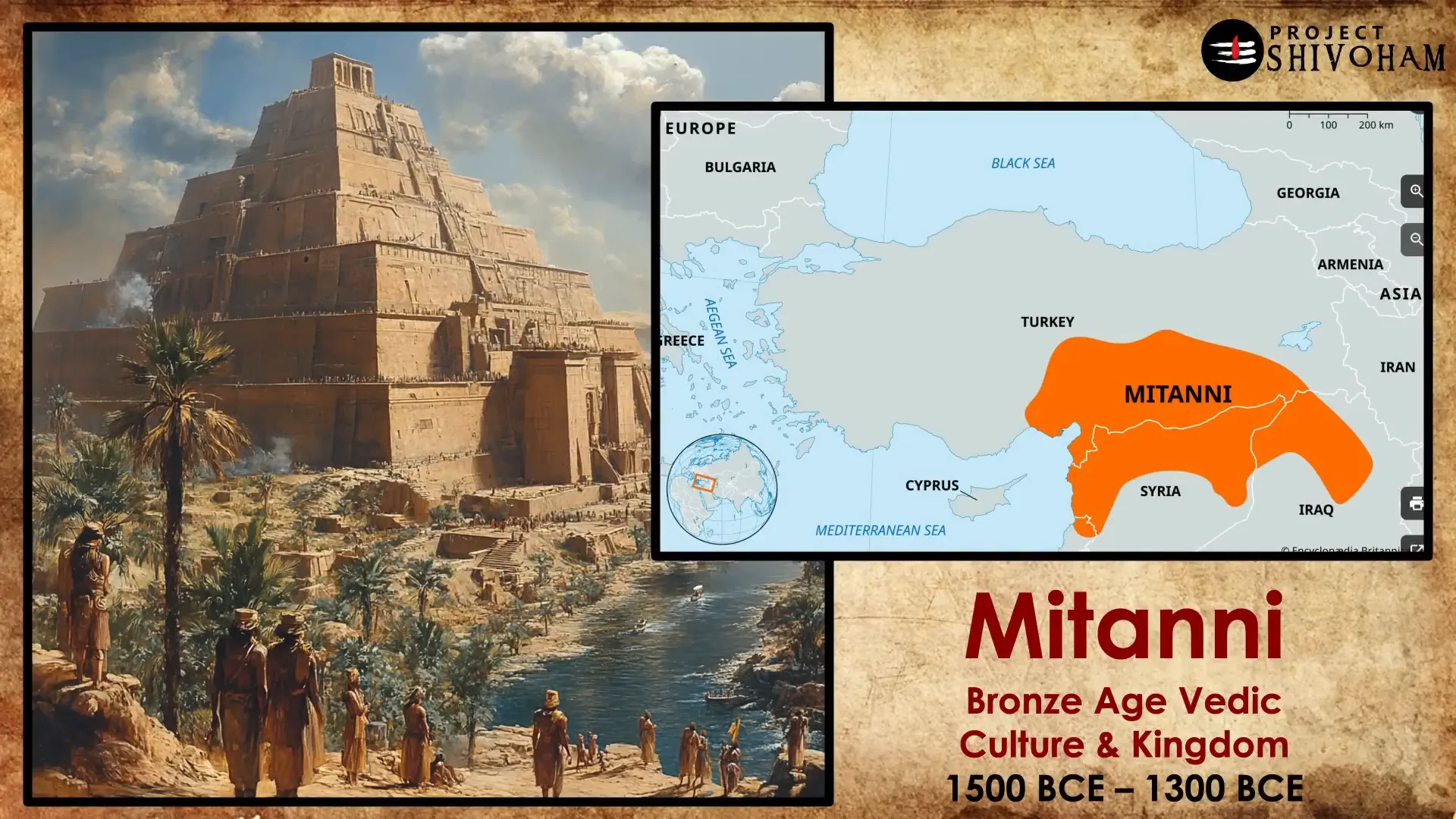
The Mitanni Kingdom: A Vedic Civilization at the Crossroads
The Mitanni kingdom is exceptional because its aristocracy spoke Sanskrit, used it in royal correspondences, and integrated Vedic traditions into governance and rituals. This wasn’t mere cultural influence; it was an intrinsic part of their identity. The Mitanni civilization existed in a politically volatile neighborhood, surrounded by powerful and often hostile neighbors such as the Hittites, Assyrians, and Egyptians.
Despite these challenges, the Mitanni kingdom thrived, and its culture reveals a deep connection with Vedic heritage. This runs counter to the popular Aryan Invasion Theory, which posits that Vedic culture and Sanskrit were introduced into Bharat from outside. The evidence from Mitanni clearly shows that Sanskrit and Vedic culture were already established in this civilization long before such theories gained traction.
Cuneiform Clay Tablets: The Written Legacy of the Ancient Near East
One of the key ways we uncover the history of the Mitanni civilization is through cuneiform clay tablets. Cuneiform is one of the earliest known forms of writing, developed by the Sumerians around 3000 BCE. The process involved inscribing wet clay with a stylus, creating wedge-shaped marks that recorded everything from trade transactions to religious hymns.
These tablets were used extensively across West Asia by various civilizations including the Akkadians, Babylonians, Assyrians, Hittites, Mitanni, Elamites, and Persians for over 3,000 years. The tablets served multiple purposes: record-keeping of trade, taxes, and grain storage; legal contracts and treaties; religious texts; and scientific knowledge such as astronomy and medicine.
Recent archaeological discoveries have unearthed caches of Assyrian cuneiform tablets, including those from the Mitanni and Hittite kingdoms dating from around 1600 BCE to 1300 BCE. These tablets provide an invaluable window into the political, social, and cultural life of the Mitanni civilization.
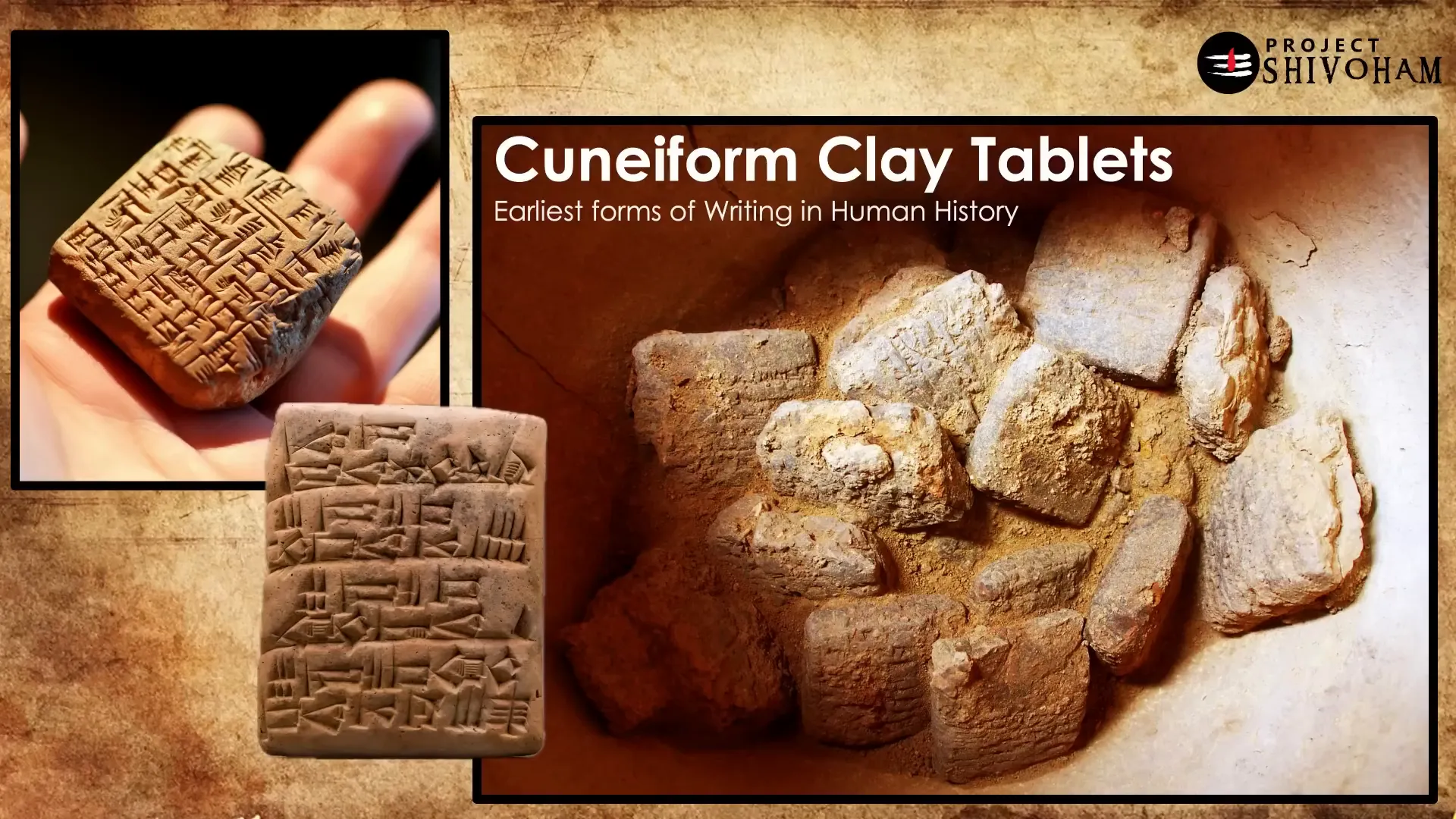
Kikuli’s Horse Training Manual: Sanskrit in the Hurrian Language
One of the most intriguing documents from the Mitanni kingdom is the Kikuli Horse Training Manual, dating to the 14th century BCE. Written by a figure named Kikuli, this manual offers detailed instructions on training horses for chariot racing and warfare. Although the manual is composed in the Hurrian language—the lingua franca of the Mitanni people—what stands out is the use of Sanskrit vocabulary embedded within the text.
The Hurrian language was the everyday spoken language of the Mitanni, but Sanskrit was prevalent at the aristocratic and administrative levels. Kikuli’s manual uses Sanskrit words for numbers, motions, horse colors, and other technical terms:
- eka (one)
tera (three)panza (five, from pancha)sata (seven, from sapta)vartana (circular motion)tura (quick, agile)babru (color of a horse)
These terms were not incidental loanwords but integral to the manual’s detailed instructions on training phases, daily routines, stamina-building exercises, and chariot racing preparation. This makes the Kikuli manual the oldest surviving horse training guide in the world and a clear indicator of Sanskrit’s influence in Mitanni culture.
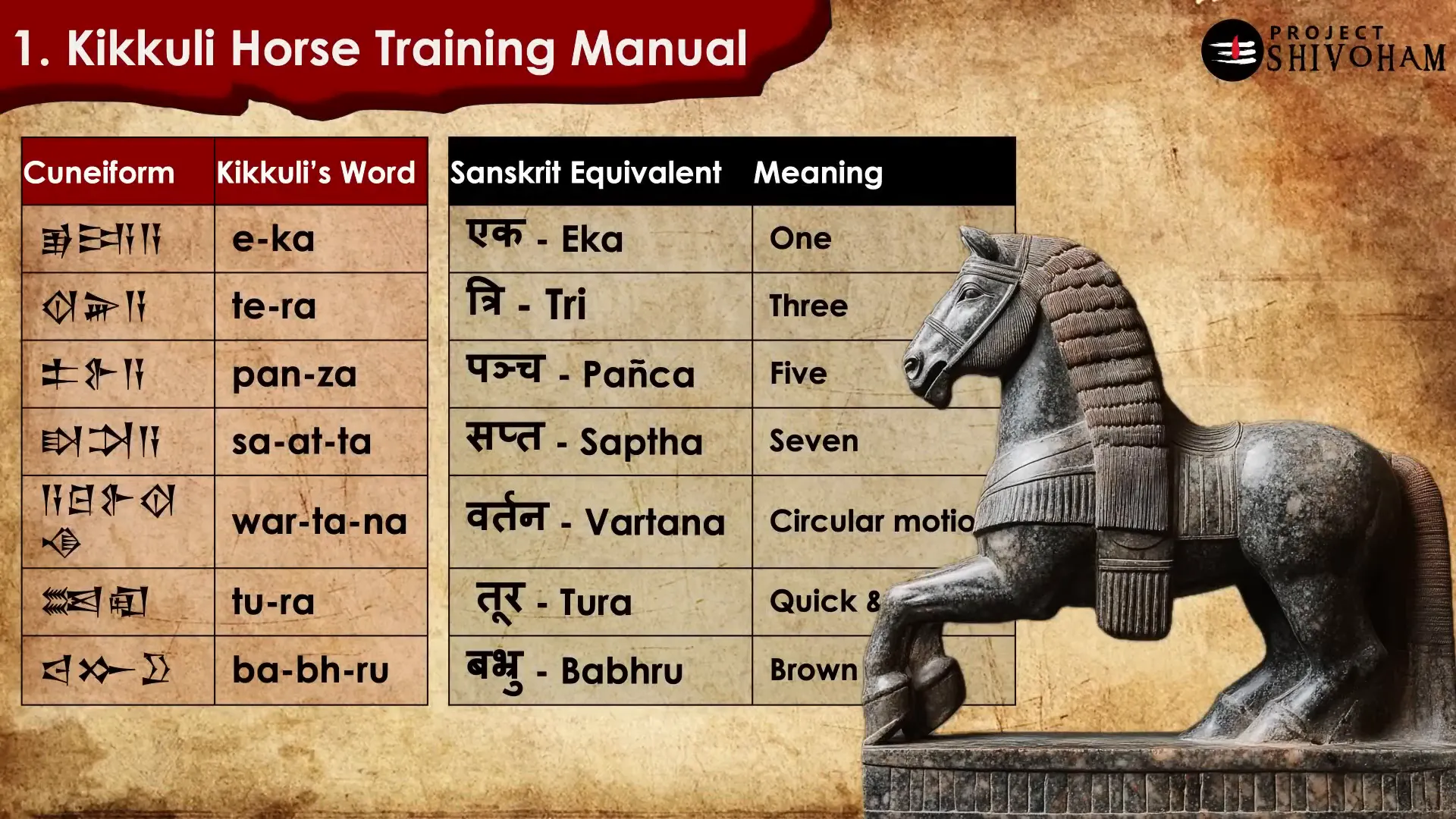
Mitanni-Hittite Treaties: Swearing on Vedic Gods
Another compelling piece of evidence comes from the peace treaties between the Mitanni kingdom and its adversaries, including the Hittites, Assyrians, and Egyptians. These treaties, inscribed on clay tablets, detail the terms of peace and mutual non-aggression. What is striking is that the Mitanni kings swore their oaths on four specific Vedic deities:
- Indra – God of war and valor
- Varuna – Guardian of cosmic order (Rita), law, and justice
- Mitra – Deity of friendship and relationships
- Ashwini Devatas – Twin gods associated with healing and medicine
The choice of these gods was not random but deeply contextual. For example, Indra’s association with war made him the perfect deity to swear upon in a peace treaty, symbolizing strength and valor. Varuna represented law and order, critical in upholding treaties. Mitra symbolized friendship and trust, while the Ashwini Devatas were invoked for healing soldiers wounded in battle.
This selective invocation of Vedic deities parallels how modern India honors certain gods in specific contexts—for instance, the Param Vir Chakra, India’s highest military award, is named after Indra, and the Indian Navy’s insignia invokes Varuna. Such cultural continuity highlights the enduring significance of these deities in martial and governance contexts.
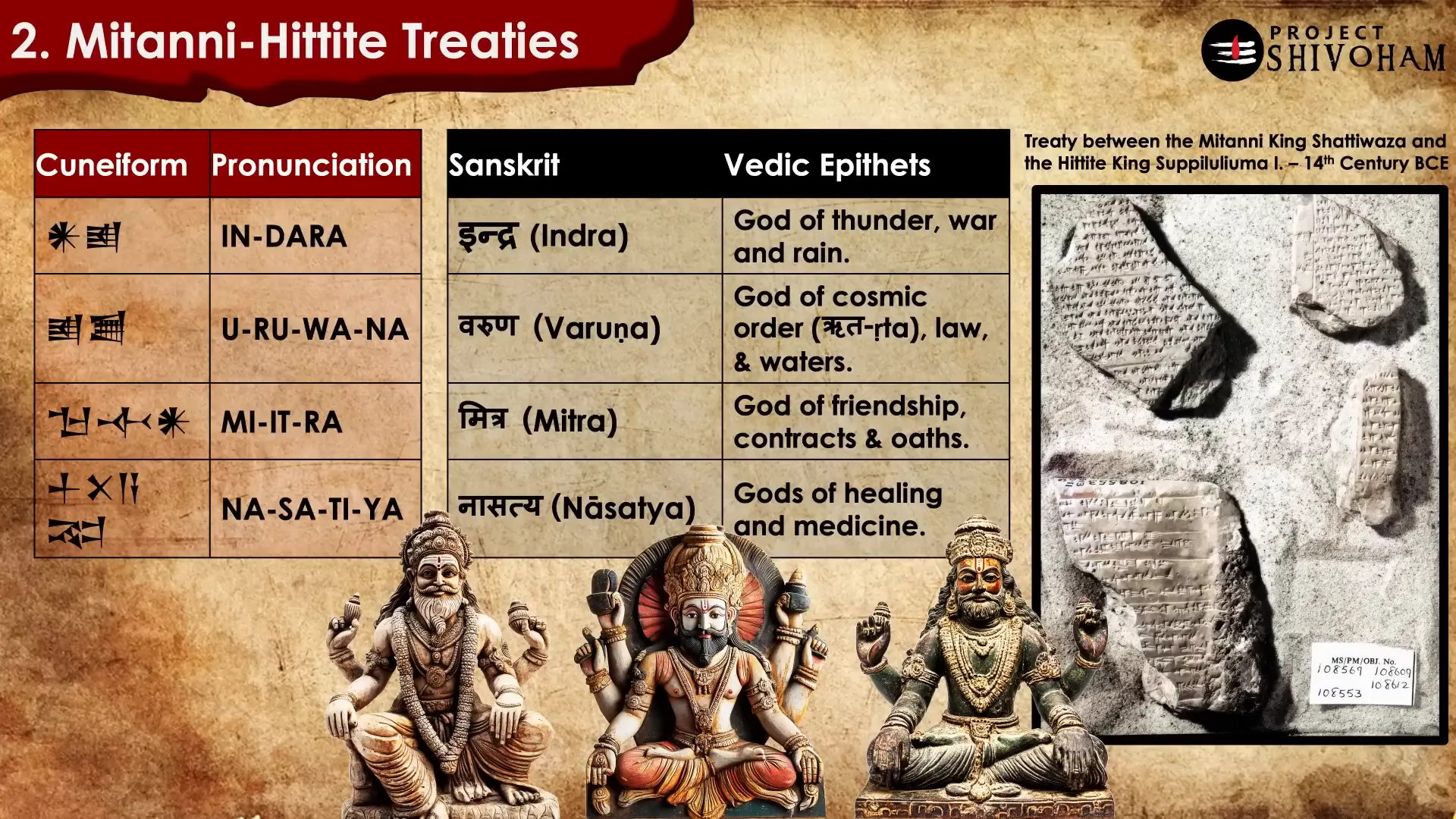
Sanskrit in the Mitanni Aristocracy: Loanwords or Language of the Elite?
A critical question arises: were the Sanskrit words found in Mitanni texts merely loanwords borrowed for technical or ritualistic purposes, or did the Mitanni aristocracy genuinely speak Sanskrit? Some scholars argue that these could just be isolated borrowings. However, when viewed alongside the war treaties sworn upon Vedic gods, the evidence strongly suggests that Sanskrit was central to Mitanni elite culture.
It is unlikely that a civilization would swear oaths on gods foreign to their core beliefs. The fact that Indra, Varuna, Mitra, and the Ashwini Devatas formed the basis of their spiritual and political identity implies that Vedic culture was deeply embedded, not merely borrowed. This makes the claim that Mitanni’s use of Sanskrit was superficial or limited untenable.
Diplomatic Correspondences: The Amarna Letters and Bogazkoy Archives
Further insights come from the Amarna letters and Bogazkoy archives—collections of diplomatic correspondence between the Mitanni kingdom and neighboring powers, including Egypt. These letters reveal the names of Mitanni kings and queens and provide glimpses into political alliances and marriages.
Notably, the Mitanni princess Gilukhipa was married to the Egyptian Pharaoh Amenhotep III, who also married another Mitanni princess named Tadukhipa. This alliance was part of a strategic effort to resist Assyrian and Hittite aggression. The marriage between Mitanni and Egypt represents one of the oldest recorded alliances between a Vedic civilization and ancient Egypt, illustrating the interconnectedness of ancient cultures.
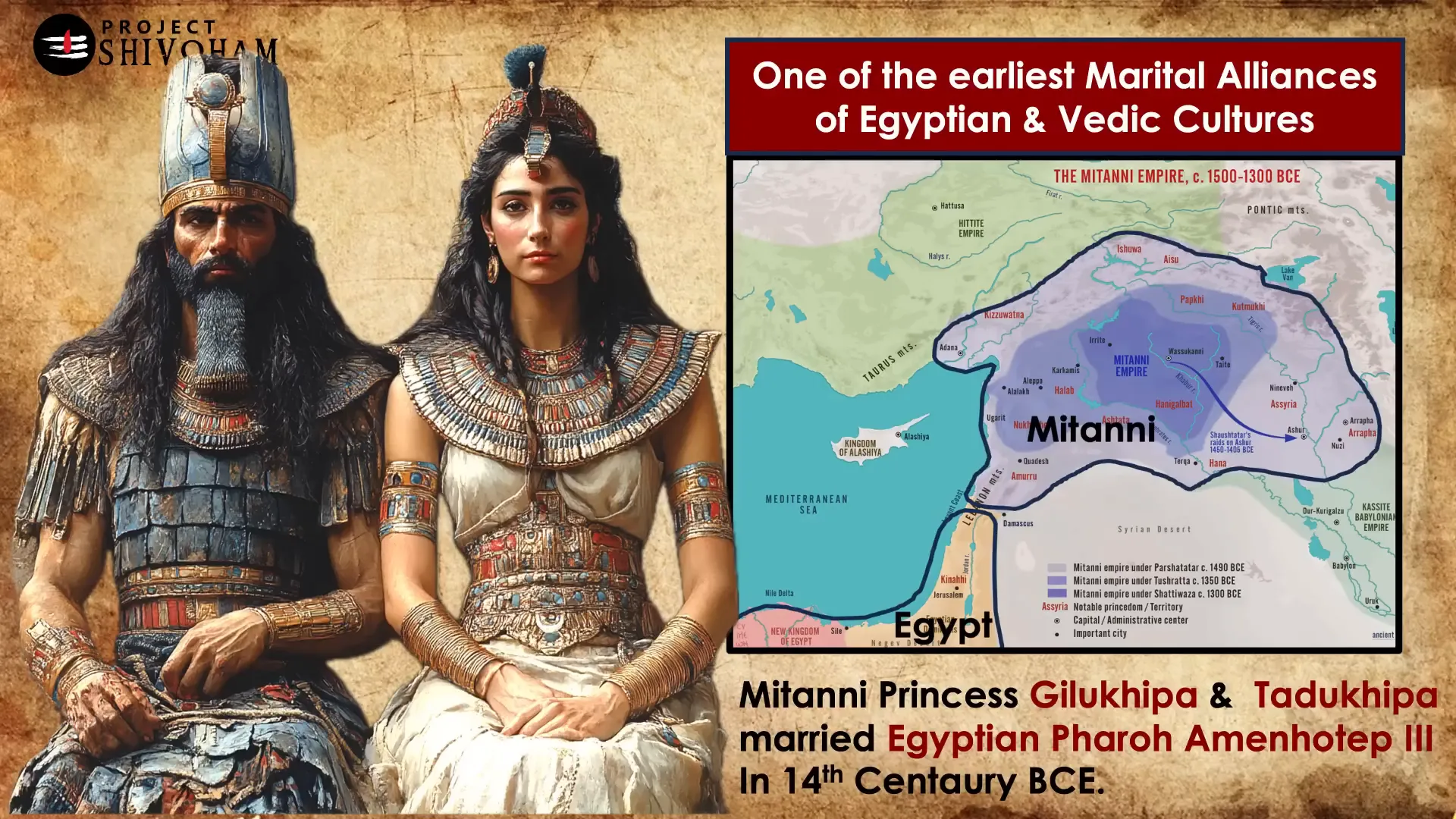
The Names of Mitanni Kings: Sanskrit Roots and Linguistic Connections
The names of Mitanni kings and queens themselves offer linguistic evidence of their Vedic heritage. Through careful etymological study, many names have clear Sanskrit parallels:
- Tusharatha – Possibly derived from Dvesharatha, meaning “one with a powerful chariot.”
- Arthadama – Parallel to Ritadhama, meaning “one who abides in Rita (cosmic order/dharma).”
- Vasukhani – Name of the Mitanni capital; “Vasu” means riches in Sanskrit, and “Vasumdhara” means “earth that bears riches.”
These names are not arbitrary but convey deep meanings consistent with Vedic cultural values and linguistic traditions. The evolution of names across geography and time also reveals fascinating linguistic transitions, such as the transformation of the Persian king Xerxes’ name from “Shayarsha” (Old Persian) to “Shahenshah” (Middle Persian), which is closely related to the Sanskrit Kshatriya, meaning “warrior” or “king”.
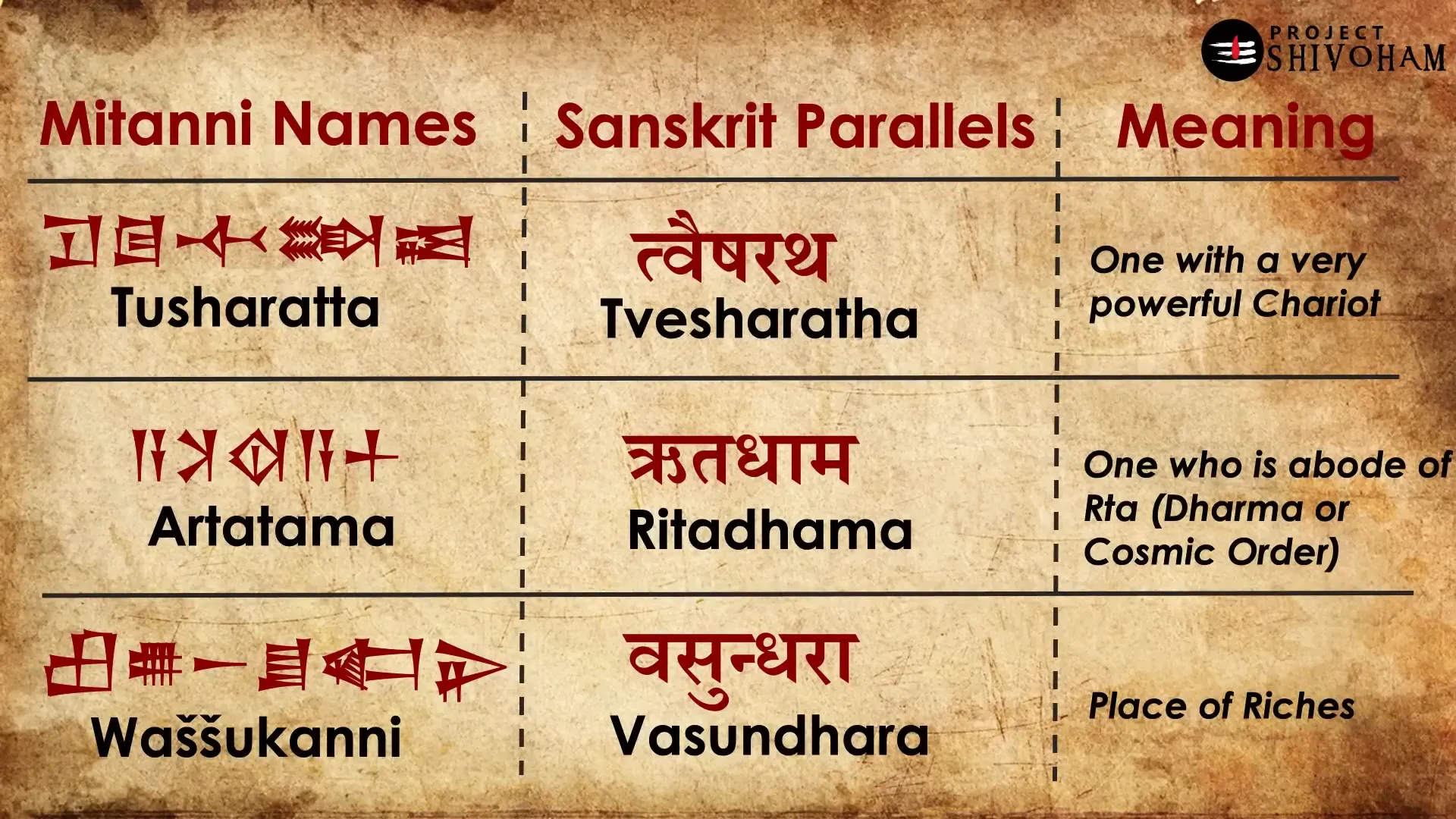
The Cultural Bridge: Persia as a Link Between Mitanni and Bharat
The Mitanni kingdom’s location and interactions reveal Persia (modern Iran) as a crucial cultural and linguistic bridge between Bharat and the Mitanni civilization. The shared roots of Sanskrit and Avestan (the ancient language of Persia) highlight the intertwined histories of these regions.
Zoroastrianism and Hinduism, despite theological differences, share linguistic and cultural foundations. The word for “king” in Sanskrit is Kshatriya, while in Avestan, it is Shayatya, underscoring these common origins.
The transmission of cultural and linguistic elements across these civilizations challenges simplistic narratives of external impositions and highlights a complex web of ancient interactions.
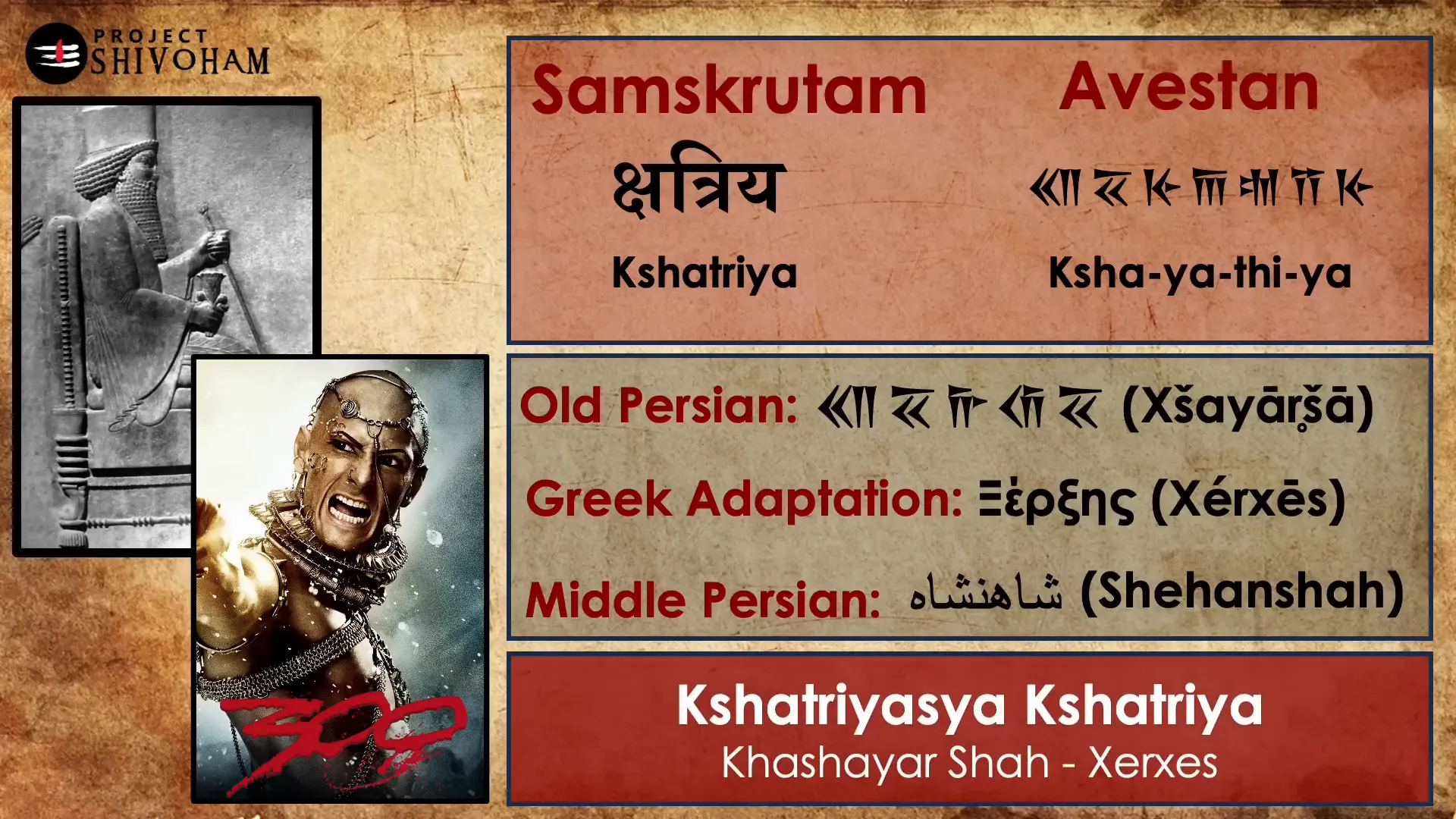
Ongoing Discoveries: The Future of Mitanni Research
Recent archaeological excavations, especially those prompted by environmental changes like drought in Iraq, have uncovered new Mitanni-era clay tablets and artifacts. Some of these discoveries, made as recently as 2022 and 2023, remain under study, promising to deepen our understanding of this enigmatic civilization.
Among the finds are seals reminiscent of those from the Indus Valley Civilization, though no direct connection has yet been established. The similarities in seal format hint at contemporaneity and perhaps shared cultural expressions in the broader Bronze Age context.
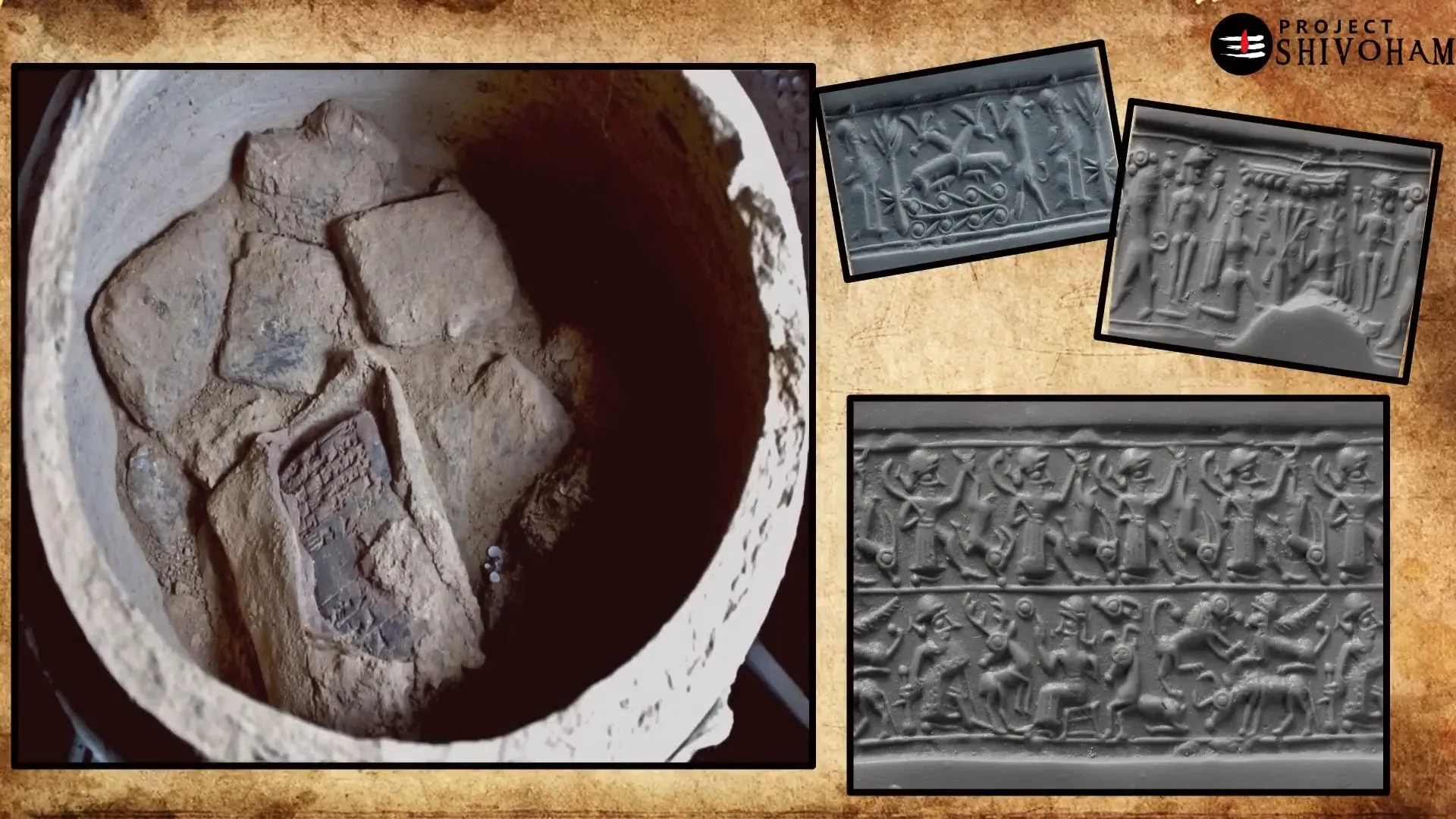
Summary: The Mitanni Civilization as a Testament to Ancient Vedic Culture
To summarize, the evidence from various sources unequivocally establishes the Mitanni kingdom as a Bronze Age civilization deeply rooted in Vedic culture and Sanskrit language:
- The Kikuli Horse Training Manual contains Sanskrit terms embedded in Hurrian text, reflecting Sanskrit’s prestige and utility among Mitanni elites.
- The Mitanni-Hittite Peace Treaties invoke Vedic deities Indra, Varuna, Mitra, and Ashwini Devatas, indicating the core role of Vedic religion in statecraft.
- Diplomatic letters (Amarna letters and Bogazkoy archives) reveal royal names with clear Sanskrit etymology and document marriage alliances with Egypt.
This civilization flourished around 1500 BCE in regions now part of Syria, Iraq, and Turkey—thousands of kilometers from Bharat—demonstrating the widespread influence and reach of Vedic culture in antiquity.
The Assyrian empire, which later became Persia, served as a vital conduit between Mitanni and Bharat, facilitating the flow of culture, language, religion, and ethnicity. The Mitanni civilization’s worship of Vedic gods and its alliances with other ancient powers provide a rich tapestry of intercultural connections that continue to inspire new research and discoveries.
Frequently Asked Questions (FAQ)
1. What is the Mitanni kingdom, and where was it located?
The Mitanni kingdom was a Bronze Age civilization that existed around 1500 BCE in the region that now encompasses southern Turkey, northern Syria, and parts of Iraq. It was known for its Vedic cultural influences and use of Sanskrit among its aristocracy.
2. How do we know that Sanskrit was used in the Mitanni kingdom?
Evidence comes from various sources, including the Kikuli Horse Training Manual, which contains Sanskrit terms; peace treaties invoking Vedic deities; and royal names with Sanskrit etymology found in diplomatic correspondences.
3. Was the Mitanni language Sanskrit?
No, the common language of the Mitanni people was Hurrian. However, Sanskrit was used by the aristocracy and in royal contexts, similar to how Latin was used among elites in medieval Europe while the common people spoke other languages.
4. What does the Mitanni kingdom tell us about the Aryan Invasion Theory?
The Mitanni civilization challenges the Aryan Invasion Theory by showing that Vedic culture and Sanskrit were already established outside Bharat long before the proposed invasions, indicating a more complex and indigenous development of these traditions.
5. What is the significance of the marriage alliances between Mitanni and Egypt?
These alliances represent one of the earliest recorded diplomatic marriages between a Vedic civilization and ancient Egypt, highlighting the Mitanni kingdom’s political importance and intercultural connections.
6. How are the Mitanni and Persian civilizations connected?
Persia (ancient Iran) acted as a cultural and linguistic bridge between Mitanni and Bharat. The shared linguistic roots of Sanskrit and Avestan and the transmission of royal titles and cultural practices reflect their interconnected histories.
7. Are there ongoing discoveries related to the Mitanni civilization?
Yes, recent archaeological excavations continue to uncover new clay tablets and artifacts, promising to expand our understanding of the Mitanni kingdom and its role in ancient history.
Conclusion
The Mitanni kingdom stands as a testament to the rich, interconnected history of ancient civilizations. Its deep-rooted Vedic culture, use of Sanskrit in governance and rituals, and strategic alliances exemplify a sophisticated society that thrived in the Bronze Age near the crossroads of Asia and the Middle East.
Far from being an isolated cultural phenomenon confined to Bharat, the presence of Samskrudam and Vedic traditions in the Mitanni kingdom reveals a broader, more complex narrative of ancient human civilization. As ongoing research and archaeological discoveries continue to shed light on this enigmatic kingdom, we gain invaluable insights into the shared heritage of humanity and the enduring legacy of Vedic culture beyond the Indian subcontinent.
Exploring the Mitanni civilization invites us to rethink our understanding of history and embrace the profound connections that unite ancient cultures across geography and time.
This article was created from the video MITANNI – A Vedic Civilization of SYRIA & IRAQ with the help of AI. Thanks to Aravind Markandeya, Project Shivoham.